

PBS’s Black Confederate Problem. Andrew and Silas Chandler Update: Here is another clip in which Ms.

Berry shares that thousands of black men fought as soldiers with the Confederate army. The full segment can now be viewed (begin at 10:30 mark), which does a better job of handling the history of James and Charles Dearman. We all remember the debacle that took place on The Antiques Roadshow back in 2010 when appraiser Wes Cowan attempted to interpret the famous tintype of Silas and Andrew Chandler. Thankfully, PBS corrected the problem a few years later on an episode of History Detectives. Unfortunately, it looks like PBS has once again found a way to butcher the history of African Americans and the Confederacy in their new series, Genealogy Roadshow.
According to Berry, no one knows for sure but somewhere between 3,000 and 10,000 were forced to ‘serve’ in the Confederate army “among hundreds of thousands of white Confederate soldiers.” Thanks for reading this post. Custer's First Last Stand. Maj.
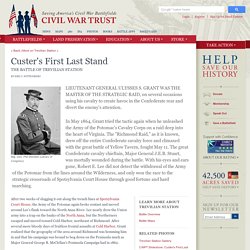
Gen. Phil Sheridan (Library of Congress) LIEUTENANT GENERAL ULYSSES S. The Ties that Bind: An Emigrant Derry Community & Those Left Behind. The google image below is the modern view of a rural laneway in Ballyriff townland, near Magherafelt in Co.
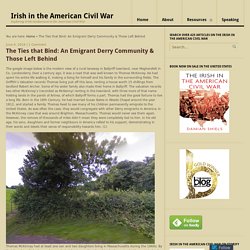
Londonderry. Over a century ago, it was a road that was well known to Thomas McKinney. He had spent his entire life walking it, making a living for himself and his family in the surrounding fields. The Griffith’s Valuation records Thomas living just off this lane, renting a house worth 15 shillings from landlord Robert Archer. Some of his wider family also made their home in Ballyriff. Thomas McKinney had at least one son and two daughters living in Massachusetts during the 1860s.
Back in Ballyriff, Thomas– now well in his 80s– had to cope with the loss of a son who, despite the fact they had not seen each other in 20 years, still formed an integral part of his emotional and economic life. He is an old man apparently of above eighty years of age…he is very infirm and wholly unable to earn his living by any manual labour. (3) 5 Chichester StreetBelfast 9th April 1873IrelandD.C. “I Not Onley Loved You But I Adored You”: 19th Century Irish Emigrants Speak of Love, Loss & Alcoholism.
On 13th October 1863 Irishwoman Margaret Martin of 84 Fourth Street, East Cambridge, Massachusetts applied for a widow’s pension.
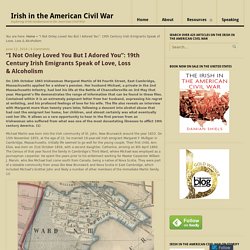
Her husband Michael, a private in the 2nd Massachusetts Infantry, had lost his life at the Battle of Chancellorsville on 3rd May that year. Margaret’s file demonstrates the range of information that can be found in these files. Contained within it is an extremely poignant letter from her husband, expressing his regret at enlisting, and his profound feelings of love for his wife. The file also reveals an interview with Margaret more than twenty years later, following a descent into alcohol abuse that had cost the emigrant her home, her children, and almost certainly was what eventually cost her life. It allows us a rare opportunity to hear in the first person from an Irishwoman who suffered from what was one of the most devastating illnesses to afflict 19th century America. (1) “I Sprung from A Kindred Race”: George McClellan Cultivates the Irish Vote, 1863.
The Irish of the North overwhelmingly supported the Democratic Party during the period of the American Civil War.
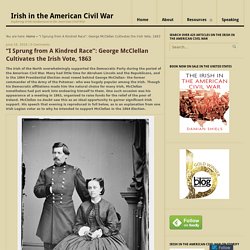
Many had little time for Abraham Lincoln and the Republicans, and in the 1864 Presidential Election most rowed behind George McClellan– the former commander of the Army of the Potomac– who was hugely popular among the Irish. Though his Democratic affiliations made him the natural choice for many Irish, McClellan nonetheless had put work into endearing himself to them. One such occasion was his appearance at a meeting in 1863, organised to raise funds for the relief of the poor of Ireland. McClellan no doubt saw this as an ideal opportunity to garner significant Irish support. His speech that evening is reproduced in full below, as is an explanation from one Irish Legion voter as to why he intended to support McClellan in the 1864 Election.
Harriet Tubman: Former slave who risked all to save others. Image copyright Getty Images.
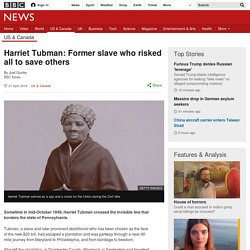
Slavery in America - Black History. The South would reach the breaking point the following year, when Republican candidate Abraham Lincoln was elected as president.
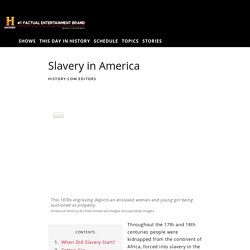
Within three months, seven southern states had seceded to form the Confederate States of America; four more would follow after the Civil War (1861-65) began. Though Lincoln’s antislavery views were well established, the central Union war aim at first was not to abolish slavery, but to preserve the United States as a nation. Abolition became a war aim only later, due to military necessity, growing anti-slavery sentiment in the North and the self-emancipation of many African Americans who fled enslavement as Union troops swept through the South.
Five days after the bloody Union victory at Antietam in September 1862, Lincoln issued a preliminary emancipation proclamation, and on January 1, 1863, he made it official that “slaves within any State, or designated part of a State…in rebellion,…shall be then, thenceforward, and forever free.” Life on a Southern Plantation, 1854. Life on a Southern Plantation, 1854 The moral inconsistency of slavery existing within a nation founded upon the sanctity of individual freedom was well recognized in the early days of America's history.
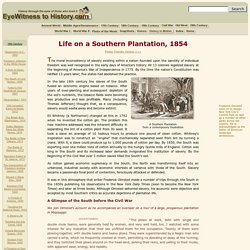
All 13 colonies legalized slavery at the beginning of America's War of Independence in 1775. Strengths and Weaknesses: North vs. South. As early as September 1861, the CSA began issuing national currency, promising to pay the bearer the face amount — six months after the ratification of a peace treaty.
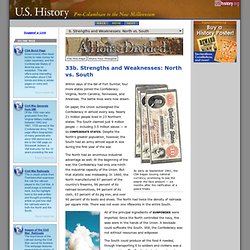
Within days of the fall of Fort Sumter, four more states joined the Confederacy: Virginia, North Carolina, Tennessee, and Arkansas. The battle lines were now drawn. On paper, the Union outweighed the Confederacy in almost every way. Nearly 21 million people lived in 23 Northern states. The South claimed just 9 million people — including 3.5 million slaves — in 11 confederate states.
The North had an enormous industrial advantage as well. The South was at a severe disadvantage when it came to manufacturing, but the Confederacy managed to keep its guns firing by creating ammunition from melted-down bells from churches and town squares. Pickett's Charge. Battle of Antietam. First Bull Run. Casualties Interactive Map. The Gettysburg Address Animated.